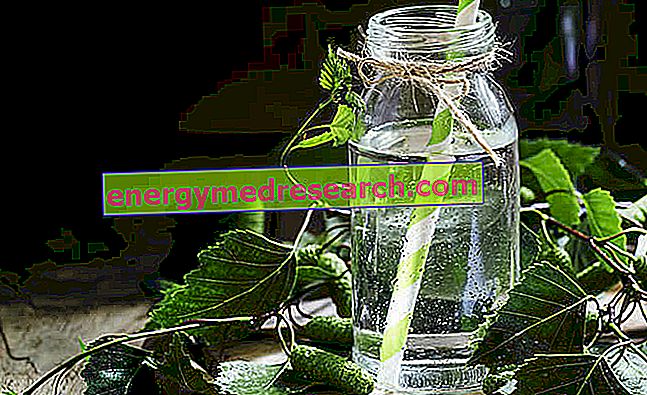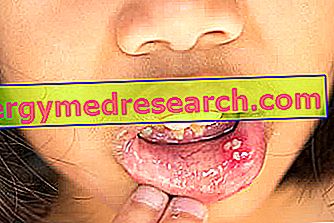What is that
Birch sap is a product that is extracted from the trunk of the homonymous plant and is used in gemmotherapy for the treatment of various disorders.
More specifically, birch sap is extracted from Betula verrucosa Ehr. (sin. Betula alba L.); for this reason, it is also known as " Betula verrucosa linfa ".

The birch sap used in the gemmotherapeutic field is extracted and processed according to a very precise method, in order to preserve its active ingredient content, therefore the potential therapeutic action.
Collection and Production
Birch Sap Collection
The technique through which birch sap is harvested is very particular.
First of all, the extraction process must take place at the end of winter, near the spring season, more precisely, in the first days of March.
The sap is harvested only from adult birch trees that grow in wooded areas, making holes in the trunk of the plants. These holes must have a depth of 2-5 centimeters and must be carried out approximately one meter from the ground, preferably on the south side of the trunk.
Inside the holes, then, small tubes are placed in which the sap flows, thus reaching special collection canisters positioned on the ground.
In general, the quantity of sap collected is greater when the plants grow at relatively high altitudes and when the carved birches are of average size (it is estimated that from a trunk with a diameter of 50 centimeters up to 4-5 liters of sap in about four days). Even a particularly harsh winter seems to be an important factor to increase the yield of the harvest.
Birch Sap production for use in gemmotherapy
After being harvested using the method described above, birch sap is processed in special laboratories, in order to obtain Betula verrucosa lymph used in gemmotherapy.

Once the laboratory is reached, 30% v / v alcohol is added to the birch sap: proportionally, two thirds of alcohol is added to one third of the sap. After that, the lymph-alcohol mixture is stirred, titrated and finally diluted to the first decimal (1DH, the type of dilution used in gemmotherapy) using 30% alcohol. The product thus obtained and diluted is then stored in dark glass containers and must be taken in the form of drops.
Please note
Birch sap is a product traditionally belonging to gemmotherapy, although - unlike the other products used in this field - it is neither a glycerine macerate nor a gemmoderivato.
The birch sap, in fact, is not an embryonic tissue and the method with which it is prepared differs from the classic preparation methods usually used in gemmotherapy.
Composition
Chemical Composition of Birch Sap
Birch sap has a rich composition, made up of substances such as:
- Mineral salts, in particular, potassium, calcium, magnesium, manganese, chromium and selenium;
- Amino acids such as valine, asparagine, glutamic acid, citrulline, isoleucine, etc .;
- Sugars such as glucose and fructose ;
- Malic acid ;
- Heterosides (glycosides), among which we find the betuloside and the monotropitoside .
Property
Properties and Uses of Birch Sap
Numerous properties are ascribed to the birch sap, among which certainly the diuretic and draining ones stand out, probably due to its high potassium content. These properties have made birch sap a remedy widely used in gemmotherapy to counteract disorders such as water retention, lymphatic edema and even hyperuricemia.
In addition to this, thanks to the diuretic properties, birch sap could also be useful in preventing kidney stones .
Anti- inflammatory and pain-relieving properties, confirmed by in vitro studies, are ascribed to betuloside and monotropitoside contained in birch sap. In particular, the anti-inflammatory and analgesic action of monotropitoside is attributable to its aglycone - methyl salicylate - which, following enzymatic reactions, is released thus carrying out its activities.
The draining activity of birch sap, associated with the anti-inflammatory action of the heterosides, makes this product to be used by gemmotherapy also as a valid anti-cellulite remedy .
Moreover, again by virtue of the pain-relieving and anti-inflammatory properties ascribed to birch sap, this product - in combination with other remedies with similar properties - is used by gemmotherapy in the treatment of different arthrosis, in particular, when associated with hyperuricemia.
Finally, even mild antiradical properties are ascribed to birch sap, which may be useful in enhancing the effect of other antioxidant remedies taken together.
dosage
When using Betula verrucosa lymph 1DH, the usual recommended dose is 20-50 drops of product 1-3 times a day, preferably on an empty stomach, therefore, before meals.
Before being taken, the drops must be diluted in half a glass of water.
Pharmacological Interactions
It is advisable to pay attention in concomitant therapy based on anticoagulant, antiplatelet agents and diuretics.
Therefore, if you are on therapy with any of the aforementioned drugs, you should seek advice from your doctor before taking birch sap.
Side effects
At the moment, there are no reports of possible side effects of taking birch sap at the recommended dosages.
Pregnancy and breastfeeding
Can birch sap be used in pregnancy and during breastfeeding?
As a precautionary measure, the use of birch sap during pregnancy and lactation is not recommended.
Contraindications
The use of birch sap is contraindicated in case of known hypersensitivity to the birch sap itself or to any of its components. Furthermore, the German Commission advises against the use of the plant (in any form) in case of heart failure and / or renal failure.
In any case, before taking birch sap, it is a good rule to always ask for the advice of your middle person, in order to identify the presence of any contraindications or potential risks for the patient.



